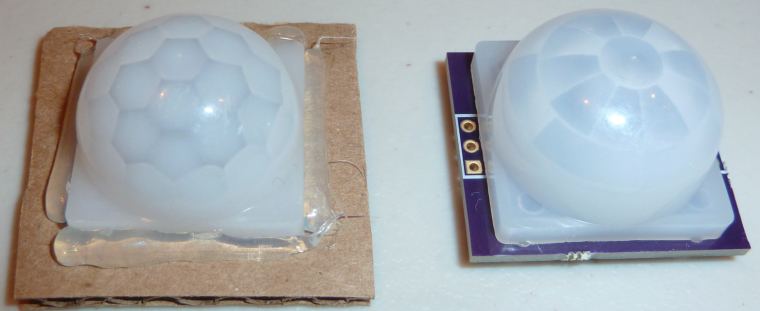PIR am312
-
I never actually played around with SR501's. Do they have the same type of "blind spot" issue? I know that for professional grade motion detectors, it's not uncommon to have two PIR's inside them. I had always thought it was for avoiding false alarms, but maybe it's more of a coverage issue.
-
The SR501 I tested at home has actually better range and coverage. I am now testing the radar sensors and they seems interesting as they "see" through walls too :D
PS of course radar sensors are good only for powered sensors
The SR501 I tested at home has actually better range and coverage. I am now testing the radar sensors and they seems interesting as they "see" through walls too :D
PS of course radar sensors are good only for powered sensors
Yes radar sensors seem great, I have received one (5.8GHz version with 2 PCB boards) and ordered RCWL-0516. I will test them for detection through my false ceiling, but I'm not sure they will be stable when powered using HLKs ?
-
I received the generic lens (on the right), which looks different than the SR501 lens (on the left):

I don't know if it's better or worse, as I haven't yet received my am612's. The good news, though, is that it's a very good fit for my primitive breakout board (shown in the photo on the right). I haven't yet received NCA78's breakout board, but I believe we're using the same spacing on our lens attachment holes. -
I received my lenses too today. In black color (but should not change the behavior, it's just for aesthetics).
Exactly the same lens design as the SR501 version. i hope your version will give better results as it's very different.I'll still install some AM612 PIRs in my home and see if the "problem" is really one when installed on ceiling to detect presence in a room. Else the next solution is to make a board with 2 PIR's with different orientation/rotation.
-
I received my lenses too today. In black color (but should not change the behavior, it's just for aesthetics).
Exactly the same lens design as the SR501 version. i hope your version will give better results as it's very different.I'll still install some AM612 PIRs in my home and see if the "problem" is really one when installed on ceiling to detect presence in a room. Else the next solution is to make a board with 2 PIR's with different orientation/rotation.
Have you tried mounting either the am612 or the lens at different heights? It seems we're shooting in the dark a little bit as to whether it's even focused as it should be or not.
It's not clear why this sensor would be worse than others in terms of blind spots. Aren't blind spots an optics issue?
-
For anyone who is interested in this topic, I posted some comments about the am612 on this other thread: https://forum.mysensors.org/topic/5986/pir-am312-412-612
It may have some relevance to the am312.
